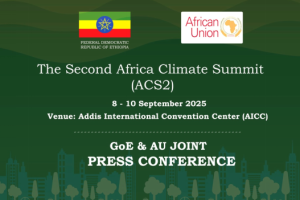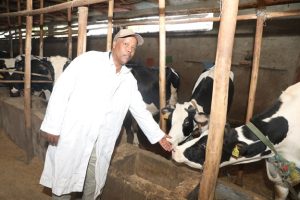BY EPHREM ANDARGACHEW
Renewable energy is being championed as a potentially significant new source of jobs and rural growth in OECD countries, and a means of addressing environmental and energy security concerns. In most countries, governments have invested large amounts of public money to support RE development and are requiring significant quantities of it to be sold by energy providers.
Rural areas are at a particular disadvantage in terms of energy, according to IFAD. They are often not connected to grids, and their remoteness makes it expensive to extend infrastructure to serve them. Without energy, smallholder farmers and rural small enterprises face barriers in adopting new technology and linking to markets and modern value chains that would allow them to grow their businesses and improve their livelihoods.
Developing renewable energy has many benefits for rural areas. Off-grid renewable energy sources, such as wind farms and solar power, can deliver cheaper and cleaner power than grid connections. Development of the renewable energy sector also creates jobs and brings a host of social benefits, such as access to information technology.
Carbon emissions that are ejected into the atmosphere leave this planet vulnerable to pollution and greenhouse gas effects. With the growing concern about climate change, global warming, and conservation of energy, the pace of environmental challenges forces governments, international organizations, automakers, policymakers, and environment analysts to take necessary measures which are worthwhile and harmless to the planet. They also promote vital technologies that curb the negative effects of climate change.
Although Ethiopia has abundant hydro, solar, wind, and bio-energy renewable resources, the energy sector of the country remain a national challenge for centuries. Especially, low generation capacity and efficiency, high costs, unreliable energy supplies, and low access rates adversely affected the socioeconomic development of the country.
Furthermore, the energy supply particularly the electricity source is dominated by large hydropower. But the rainfall differs significantly in Ethiopia from year to year. As a result, overreliance on hydropower can make the supply of energy very unpredictable.
Besides, Ethiopia is a largely rural country, but urbanizing rapidly expanded and the demand for energy is growing at an alarming rate that requires the development of energy resources in line with the growth of the population and economy of the country.
Asres, G.A. (2021) in his academic work entitled “Renewable Energy Potential, Energy Access, and Climate Change Mitigation in Ethiopia” mentioned that throughout Ethiopia, energy consumption is primarily derived from biomass which accounts for 91 % of the energy consumed. The share of petroleum is around 7 % while electricity is less than 2 % of the total energy demand in the country. Ethiopia’s current electricity access is only 44 % where grid connections provide 33 % of connectivity and off-grid solutions provide 11 %.
In fact, Ethiopia has been working to solve the energy problem of the country. Nonetheless, the attempts to fulfill the energy demand of the country remain in progress. Grand Ethiopian Renaissance Dam (GERD) Board Chairman Dr. Abraham Belay once said that Ethiopia’s energy need is growing at an annual rate of 13 %.
Ethiopia’s Minister of Transport and Logistics Minister Dagmawit Moges noted that Ethiopia is planning to utilize environmentally friendly transport technologies. Hence, developing renewable energy is one of the key programs included in the 10-year master plan of the country. It also supports the realization of the untapped potential of energy resources in the country.
Indeed, Ethiopia is developing environmentally friendly energy resources which are imperative to this planet. Hence, the country agreed to implement a 20 million USD renewable energy project. The Global Energy Alliance for People and Planet in Ethiopia has launched the first of its kind, accessible renewable energy for agriculture project.
Water and Energy Minister Habtamu Itefa during the launching ceremony of the project said that access to electricity is important for social and economic development as well as to prevent climate change. It is also important for the health, and education sectors to supply drinking water, make cities energy users, and expand the industry.
The minister said that more than half of the citizens in the country do not have access to electricity. Hence, a national electrification program has been designed and implemented to address this problem, and efforts are being made to provide electricity nationwide by 2030.
Accordingly, the Project will be implemented in four areas in the Oromia region, three areas in the Amhara region, and one area in the Sidama and Southern regions. The project will provide electricity, clean water, and street lights to over 15,000 people. Moreover, 1500 hectares of land can be irrigated by replacing diesel pumps with electric pumps.
Studies show that Ethiopia depends heavily on biomass fuel for energy sources. Hence, further energy diversification is critical for the sector’s sustainable development, because energy absence impedes rural development. In Ethiopia, the rural economy is lagging behind in the overall development of the country. Therefore, the development of similar renewable energy sources can play a role in alleviating this development issue.
The Ethiopian Herald October 19/2022




